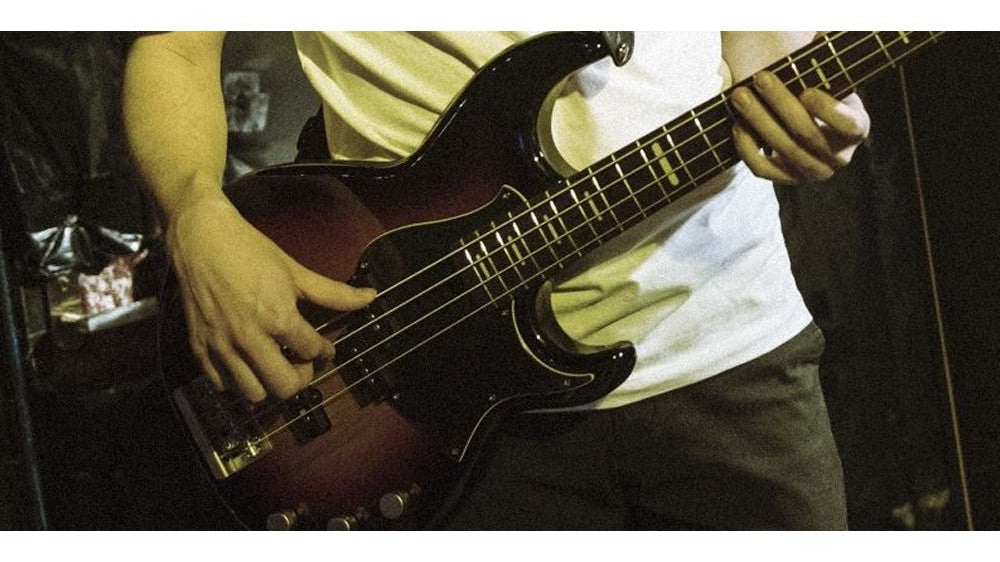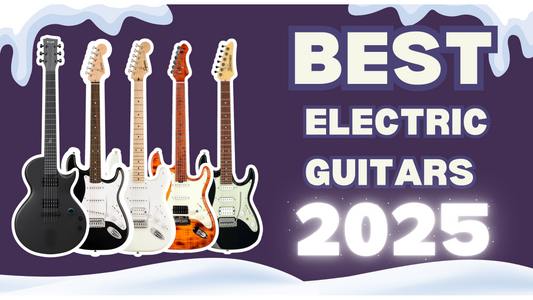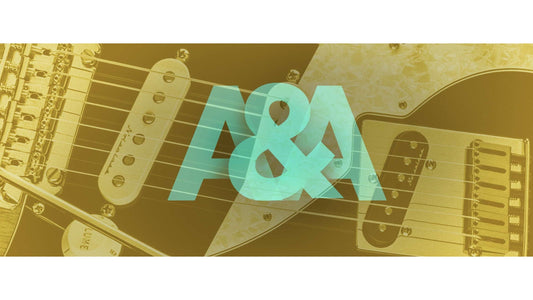
7 Lời Khuyên Mua Đàn Guitar Bass Cho Người Mới
"Học bò rồi hãy lo học chạy". Câu nói cũ này lại áp dụng hoàn hảo cho việc học cách chơi bass. Nhìn lại, tôi có thể thấy những lựa chọn mà tôi đã đưa ra khi mới bắt đầu - và những lựa chọn mà cha mẹ tôi đã giúp đỡ tôi - đã đưa tôi đến vị trí của ngày hôm nay với tư cách là một tay bass.
Đó là những năm 1980. Tôi đã có quãng thời gian với những đam mê không đâu của tuổi trẻ. Thời điểm đó, ai đó lẽ ra đã lên kế hoạch can thiệp để giải thoát cho tôi và đưa tôi đến với guitar bass. Một cây guitar bass già nua mệt mỏi, một chiếc amp tương đương với tiền ăn cả tháng và nhiệt huyết luyện tập vô tận.
Mặc dù các thiết bị này có kiểu dáng và chất lượng kém, tôi đã tìm ra cách để làm cho tất cả hoạt động, và tiến hành mài mòn băng cát-sét và đĩa LP cho đến khi tôi có thể ghi chú những nốt bass khá phức tạp. Cùng với đam mê xem các show diễn âm nhạc và các đài phát thanh ở trường đại học, tôi đã xây dựng ý tưởng cho mình, tìm và học theo những thần tượng âm nhạc, và cuối cùng đi đến phong cách riêng của tôi.
Nhưng nếu có một người đi trước hướng dẫn thì tôi đã tiết kiệm được rất nhiều thời gian và công sức… và đó là nội dung của bài viết này. Ngoài việc hướng dẫn bạn khỏi những sai lầm thời trang mà tôi đã mắc phải, tôi sẽ chia sẻ một số gợi ý để đưa bạn trên con đường nhanh chóng đến với vinh quang.
1. BẮT ĐẦU VỚI MỘT CÂY BASS CHẤT LƯỢNG
Cây bass đầu tiên của tôi thật khủng khiếp - một mảnh ván ép vụn với dây thép và phím đàn có thể khiến bạn bị xước khi không cẩn thận. Thật may mắn cho bạn, nhiều loại bass nhập khẩu ngày nay tốt hơn nhiều so với cây đàn của tôi, và với một nghiên cứu nhỏ, bạn sẽ thấy không có lý do gì để sở hữu một cây bass khiến bạn khó chịu khi chơi nó hoặc một chiếc phải trả giá quá nhiều.

Yamaha RBX170 và Yamaha TRBX174
Lấy ví dụ như các cây bass của Yamaha RBX170 và TRBX174. Cả hai đều giao hàng ngay khi xuất xưởng, với rất nhiều kiểu dáng sang trọng, giai điệu, kết cấu chắc chắn và giá cả phải chăng. Chúng cũng dễ chơi nhờ action thấp, cần thoải mái. Đây là những thuộc tính quan trọng giúp người chơi luôn có cảm hứng, thay vì bị cản trở bởi nhạc cụ của họ.
Nếu bạn đã sở hữu một cây bas của người mới bắt đầu mà bạn không thể nói được khi cầm nó lên, bạn nên cân nhắc nâng cấp lên một nhạc cụ trung gian như Yamaha BB234 (hoặc người anh em họ 5 dây của nó, BB235.) Đó là một "con ngựa" làm việc thực sự, với vẻ ngoài cổ điển, độ bền, âm thanh ngọt ngào và loại khả năng chơi mà các nhạc sĩ nghiêm túc mong đợi và xứng đáng.
2. BẠN CẦN MỘT AMPLIFIER CHẤT LƯỢNG KHÔNG KÉM
Amplifier và loa ngày nay đủ nhẹ để xoay vòng bằng một tay và đủ nhỏ để đặt cạnh bạn ở ghế sau của taxi… nhưng đủ mạnh để "thổi bay" cánh cửa của bất kỳ căn phòng nào. Lớn hơn không nhất thiết phải tốt hơn, vì vậy hãy bỏ qua các giàn có kích thước to như tủ lạnh và xem xét cẩn thận một bộ combo (amplifier và loa kết hợp) hoặc một bộ amplifier kết hợp khả năng định hình giai điệu và công suất bạn cần.
Nhân tiện, khi nói đến amplifier, hãy biết điều này: Cha mẹ hoặc bạn cùng phòng của bạn sẽ rất vui nếu bạn mua cây guitar bass có giắc cắm đầu ra tai nghe.
Tham khảo: Amplifiers
3. TÌM THẤY GIÁO VIÊN TỐT VÀ CAM KẾT HỌC HÀNH NGHIÊM CHỈNH
Không có cách nào tốt hơn để bắt đầu hơn là dưới sự hướng dẫn của một người biết nhiều hơn bạn và có đủ kiên nhẫn để hướng dẫn bạn vượt qua những khó khăn mà bạn sẽ gặp phải. Người thầy phù hợp sẽ có thể đánh giá điểm mạnh và điểm yếu của bạn, chỉ cho bạn kỹ thuật chơi phù hợp, khuyến khích bạn và thường xuyên thử thách bạn bằng những quan sát, hiểu biết sâu sắc, lý thuyết và các bài tập thực hành nuôi dưỡng đam mê của bạn và thúc đẩy bạn phát triển và đạt được những điều mới độ cao.
4. TÌM HIỂU CÁCH ĐỌC NỐT NHẠC
Không có luật nào nói rằng bạn không thể chơi bass nếu bạn không biết đọc nhạc và trên thực tế, có điều gì đó đáng khen ngợi khi đi theo con đường phi truyền thống để đạt được mục tiêu của mình. Nhưng lý tưởng nhất là bạn có thể cân bằng giữa thiên tài bẩm sinh với kiến thức và khả năng, và sự "mù chữ" dưới bất kỳ hình thức nào sẽ kìm hãm bạn.
Đừng chờ đợi để bắt đầu. Thoạt đầu có thể cảm thấy diễn ra chậm, nhưng sau khi bắt đầu, bạn sẽ có quyền truy cập vào một ngôn ngữ mà chỉ những nhạc sĩ khác mới có thể nói được. Hãy ưu tiên đọc sách ngay từ sớm để tăng tốc độ phát triển của bạn và mở ra nhiều cánh cửa - cả cơ hội âm nhạc và hiểu biết sáng tạo - những thứ có thể vẫn bị đóng cửa.
5. MUA MÁY LÊN DÂY
Nếu cây bass của bạn âm thanh không chuẩn, rất có thể bạn sẽ nhận được nhiều cái nhìn chua ngoa từ các đồng nghiệp trong ban nhạc cũng như khán giả. May mắn thay, điều đó thật dễ dàng thực hiện, ngay cả khi bạn không có một đôi tai đặc biệt tốt: Chỉ cần mua một bộ máy lên dây là giúp bạn an tâm hoàn toàn. Nó tránh cho bạn những cảm âm sai.
6. ĐẢM BẢO BASS CỦA BẠN ĐƯỢC CÀI ĐẶT CHÍNH XÁC
Bạn cần chú ý điều chỉnh action, chiều cao ngựa và cần để giúp bạn chơi một cách thoải mái và đảm bảo rằng cây guitar bass đó được phát đúng ngữ điệu (tức là, nó phát các nốt đúng điệu trên toàn bộ chiều dài của phím đàn). Hầu hết các cửa hàng nhạc cụ đều có thợ làm đàn có thể làm việc này cho bạn (nếu không, có thể họ có thể giới thiệu cho bạn một người), nhưng nếu tiện, bạn có thể cân nhắc tự làm… tất nhiên sau khi tham khảo nhiều tài nguyên và video trực tuyến.
7. THỰC HÀNH, THỰC HÀNH, THỰC HÀNH
Không có gì thay thế cho việc thực hành thường xuyên, nhất quán, cả một mình và với những người khác. Chơi cho đến khi các ngón tay của bạn có cảm giác như chúng sắp rơi ra và thực hiện lại vào ngày hôm sau và ngày tiếp theo cho đến khi các vết thương bắt đầu hình thành trên đầu ngón tay của bạn và sức chịu đựng của bạn tăng lên. Bạn chỉ có thể trở nên tốt hơn bằng cách chạy qua các bài tập luyện ngón, cũng như thực hành các đường rãnh và mẫu trên máy đếm nhịp để giúp bạn hiểu rõ hơn về thời gian và độ chính xác của mình.
Thử thách bản thân bằng cách chơi cùng với các bản ghi âm của những nghệ sĩ chơi bass mà bạn ngưỡng mộ, và cố gắng tìm ra những đường cách chơi phức tạp theo từng bậc. Học cách chơi cùng một mẫu ở các vị trí khác nhau lên và xuống cần.
Và khi bạn cảm thấy sẵn sàng, hãy tận dụng mọi cơ hội có thể để chơi với những người khác, đặc biệt nếu họ giỏi hơn bạn.
Tác giả: Michael Gelfand












